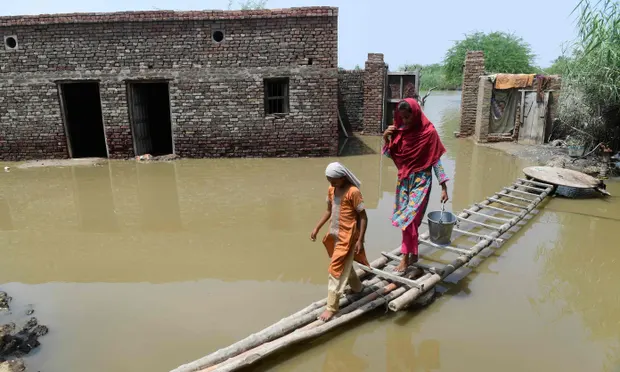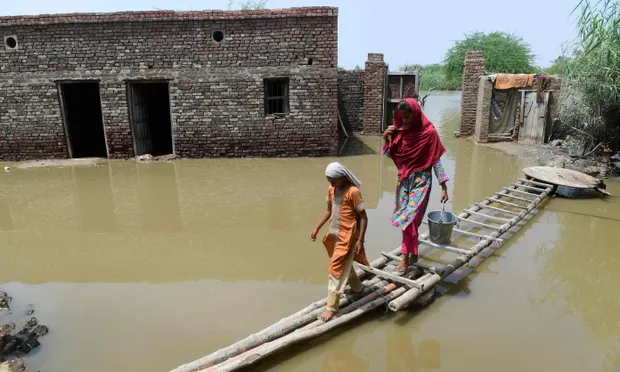‘Potential’ floods in Pakistan worsen as temperatures rise
‘Potential’ floods in Pakistan worsen as temperatures rise Scientists say that global warming may play a role in the flood disasters in Pakistan.
Researchers from the World Weather Attribution Group say that climate change has increased the intensity of rainfall.’Potential’ floods in Pakistan worsen as temperatures rise
However, there was too much uncertainty in the results, so the team was unable to estimate the impact.
Scientists believe that there is about a 1% chance of such an event occurring in the coming year.

Pakistan dengue cases soaring after record floods
Going green could save world ‘trillions’ – study
Satellites now get full-year view of Arctic sea-ice
In the two months since flooding began in Pakistan, tens of millions of people have been affected, with around 1,500 dying because of the rising waters.
The intensity of the downpours saw the river Indus burst its banks, while landslides and urban flash floods swamped many areas. Right from the start, politicians pointed to climate change as having made a significant contribution to the desperate scenes. But this first scientific analysis says the picture is complex.
Certainly, the crippling heatwaves that gripped India and Pakistan earlier this year were easier to attribute, with researchers finding that climate change had made them up to 30 times more likely to happen.
But extreme rainfall events are hard to assess. Pakistan is located on the edge of the monsoon region where the rainfall pattern is extremely variable from year to year.
Further complications include the impact of large-scale weather events such as La Niña, which also played a role in the last major floods in Pakistan in 2010.
During the 60-day period of heaviest rainfall, this summer scientists recorded an increase of about 75% over the Indus river basin, while the heaviest five-day period over the provinces of Sindh and Balochistan recorded a rise in rainfall of around 50%. The researchers then used climate models to determine how likely these events would be in a world without warming.
Some of the models indicated that the increases in rainfall intensity could all be down to human-caused climate change – however, there were considerable uncertainties in the results.
“Our evidence suggests that climate change played an important role in this event, although our analysis does not allow us to make that conclusion,” said one of the report’s authors, Frederik Otto from Imperial College London. What a great role it was.”https://wethinkbetter.com/tv-ad-breaks-can-be-long-as-long-as-the-rules-are-reviewed/
“What we saw in Pakistan is exactly what climate forecasts have been predicting for years. It’s also consistent with the historical record that heavy rains in the region have increased dramatically since humans first arrived. The analysis also clearly shows that further warming will make these extreme rainfall events more intense.”So while precise data for the role of climate change is difficult to determine, the fingerprints of global warming are clear.”
The researchers say there is now about a 1 percent chance of the heavy rains experienced in Pakistan this year happening again in any year, although that estimate comes with a large degree of uncertainty.

